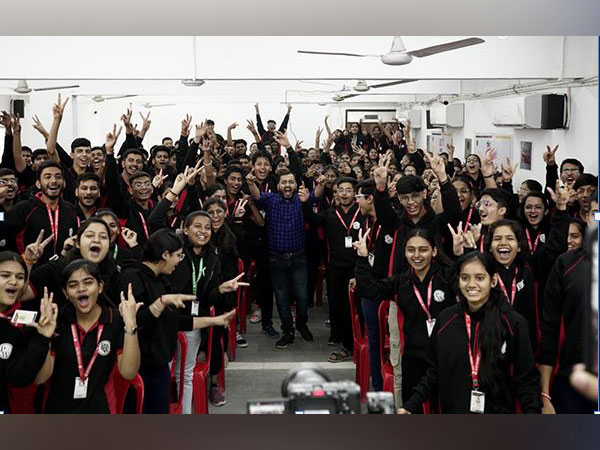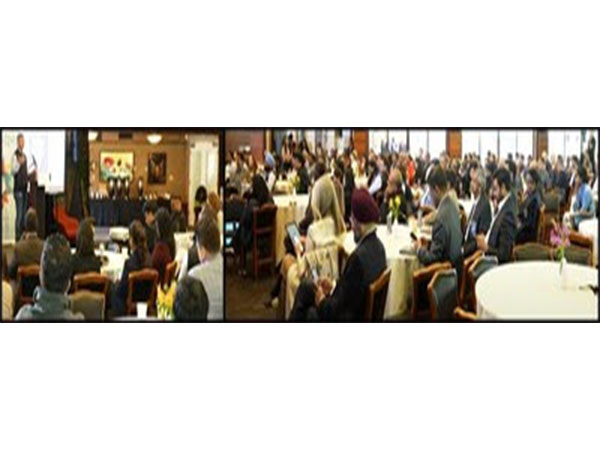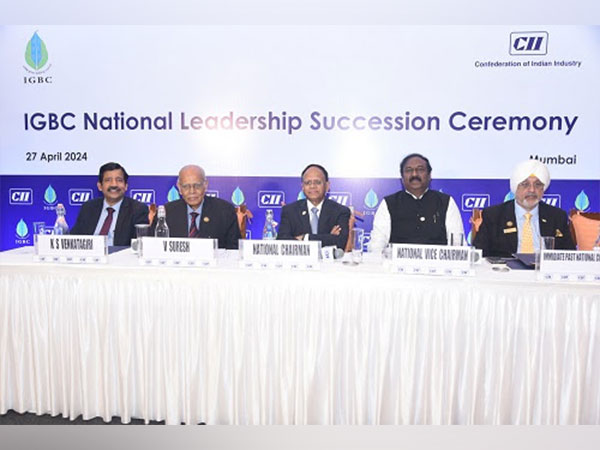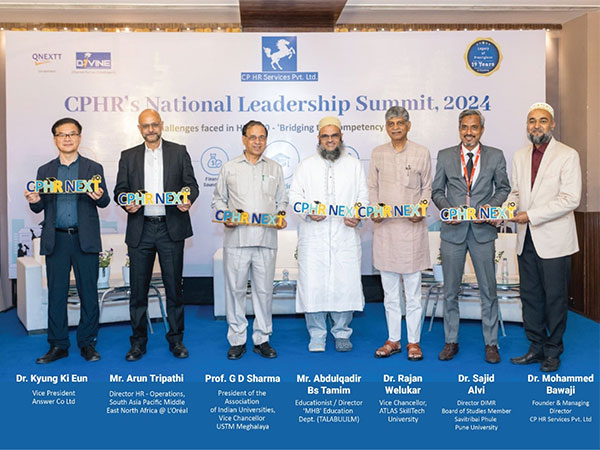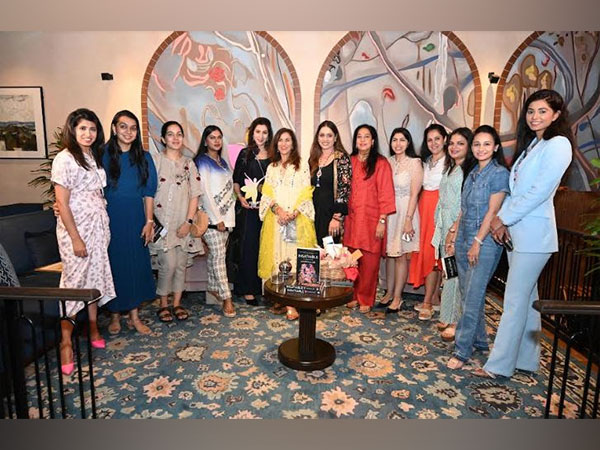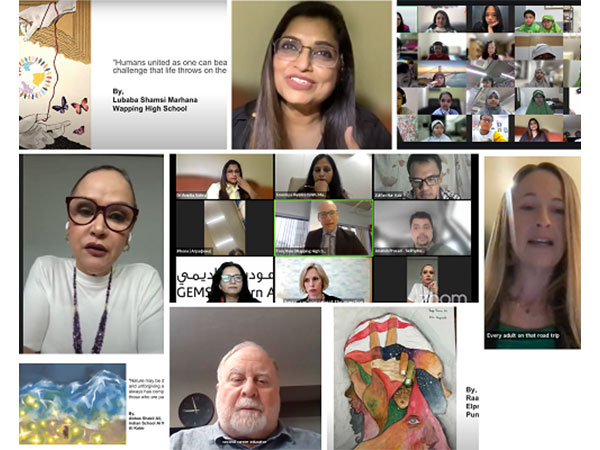The second edition of Indian Ceramics Triennale puts spotlight on social issues through the lens of creativity
Feb 28, 2024
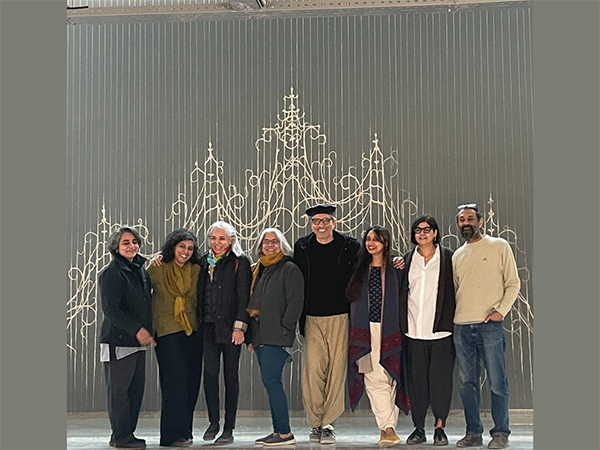
PNN
New Delhi [India], February 28: The ongoing Indian Ceramics Triennale in the capital has brought together over 60 Indian and international artists from 12 countries showcasing 34 projects that not only focus on celebrating ceramic art and artists but also use these creations as a tool to engage and inform on social and environmental issues. The Triennale is on till March 31, 2024 at New Delhi's new cultural centre Arthshila Delhi.
The theme of the 2024 edition of the Triennale 'Common Ground' is aimed at engaging with landscapes, identities, and histories embedded in clay. The over two-month-long exhibition also seeks ways for greater inclusivity, reflecting on practices that mediate between readings of precedent and practice, historical and contemporary, material and ephemeral.
Artist-curators Anjani Khanna, Madhvi Subrahmanian, Neha Kudchadkar, Reyaz Badaruddin, Sharbani Das Gupta, Vineet Kacker, Kanika Anand and Sangeeta Kapila, have come together with a shared vision to expand the perception of ceramics and the platforms that showcase the diverse range of growing ceramics practices in India.
Seeking to create a dialogue between varied pasts and presents, and between materials and methodology, technology and tradition, Common Ground is showcasing these dynamic and fluid conversations through the artistic lens of renowned ceramic artists from South Asia and around the world. In addition, there is a series of programming such as workshops, film screenings, special sessions for school children and walkthroughs every weekend to engage with the audience.
Kolkata-based artist Asish Chowdhury uses clay as a vehicle for interrogations of the complexities and harsh realities of modern life. He draws from national news of social upheaval and signs of protest to the ubiquitous presence of architecture to inform the shape of his narratives. His work at the Triennale comes from a belief that the earth is a register of one's footsteps. With the help of a group of brickmakers, Asish has shaped or shifted the clay into the form of bricks and arranged them into a wall. The stories can be seen as fragmented paintings arranged in many ways. They are the stories of those who fought for us and their celebrations amidst the pain of daily life, a gigantic silent scream of drawings and images.
Born in Bargan near Sundarban, West Bengal, Prithwiraj Mali was deeply influenced by the socialist ideologies arising from the findings of the natural disasters in the region, and also the notches of partition and miserable migrations of India. These aspects of displacement and homelessness are central motifs to the Vadodara-based artist's installation 'Sculpture Home for Homeless II'. As an artist and human being Mali is inspired by the honeybees and nourishes the notion of the world as an interconnected family. He rejects the idea of war and looks forward to homes that link us to brotherhood and humanity.
Drawing inspiration from his upbringing in a mining area surrounded by a working-class culture, New Delhi-based Birender Yadav's work captures the labour, life, pain, struggle, and beauty that characterize this particular social stratum. His work 'Re-Presented from the Traces' originates from the brick kilns in the city of Mirzapur, which Yadav began visiting in 2014 where mainly migrant seasonal workers (from a low caste and class background) from the bordering Bihar or Jharkhand regions come for work. One of the works, which looks like a wave, refers to a saying among the workers that states that you cannot balance the bricks until you have broken a rib. Most people who work in the kilns have one or more broken ribs due to the hard work.
Multidisciplinary artist Deepak Kumar examines the intricate relationship between rampant urbanisation and the loss of ecology and native biodiversity. His installation comprises ceramic tiles and sculptures with printed images. Through geometrical lines and symbols reminiscent of urban blueprints, he prompts reflection on the hidden costs of development. "The main idea behind my work is to explore how the rapid, unplanned city growth impacts the green spaces, including the biodiversity of plants and various animal species," says Deepak Kumar.
Mixed-technique sculptor Oxana Geets invites viewers to reflect on the complexities of adapting to new surroundings with her installation 'The Reassembly Ground'. It conveys the emotional journey linked to immigration, encompassing disorder, confusion and loss. Geets hails from a city situated on the border of Russia and China. She moved to the United Kingdom in 2022.
"Revisioning Bithooras" is a collaborative and participatory artwork between the African artist Lilian Nabulime and British artist Andrew Burton and the traditional bithoora makers Pinky Devi (Jangala Brindavan), Hema Devi (Ballamgarh) women from dairy farming communities around Delhi. This stunning installation celebrates bithooras: an extraordinary but overlooked feature of Delhi's cityscape and cultural heritage. These beautiful, often elaborately decorated fuel stores are made entirely from gobar. Unique intrusions of the rural within the metropolis, bithooras are slowly built up, only to be broken down almost as soon as they are completed. Bithooras were a common site across Delhi but are disappearing fast as land is sold for development and younger generations of women seek other work. 
"Triennale is less about promoting ceramics in a traditional sense, and more about showcasing the diversity of artistic expression in clay-based art practices. Ceramics has long been overlooked by the art gallery system and stereotyped as functional or decorative expressions. The Triennale showcases projects where the narrative goes beyond seductions of materiality into an exploration of modern paradigms," says Vineet Kacker, Co-Curator of Indian Ceramics Triennale 2024.
Supporting Partners:
JSW is the primary patron of the Indian Ceramics Triennale 2024
Arthshila, Delhi is the venue partner.
Writer Relocations is the art handling and logistics partner.
Bhoomi Pottery is the Materials Partner
Inlaks Foundation and Inko Centre for artists project support
Gallery Nvya and Clay Station as parallel exhibition support
Access for All is the Accessibility Partner.
Sanskriti Kendra studio support
Website: https://www.indianceramicstriennale.com/
Arthshila: An initiative of Takshila Educational Society, Arthshila is an immersive platform for creating and sharing ideas centered around the arts with spaces designed to facilitate artistic expression and curate creative experiences. Our focus is on architecture, cinema, design, literature, performing arts & visual arts across four unique locations--Ahmedabad, Santiniketan, Patna, and New Delhi. The Arthshila centres offer regular quality curation of performances, seminars, conferences, workshops, exhibitions, and interactions that seek to inspire curious minds.
Arthshila
Website: https://www.arthshila.org/
(ADVERTORIAL DISCLAIMER: The above press release has been provided by PNN. ANI will not be responsible in any way for the content of the same)
